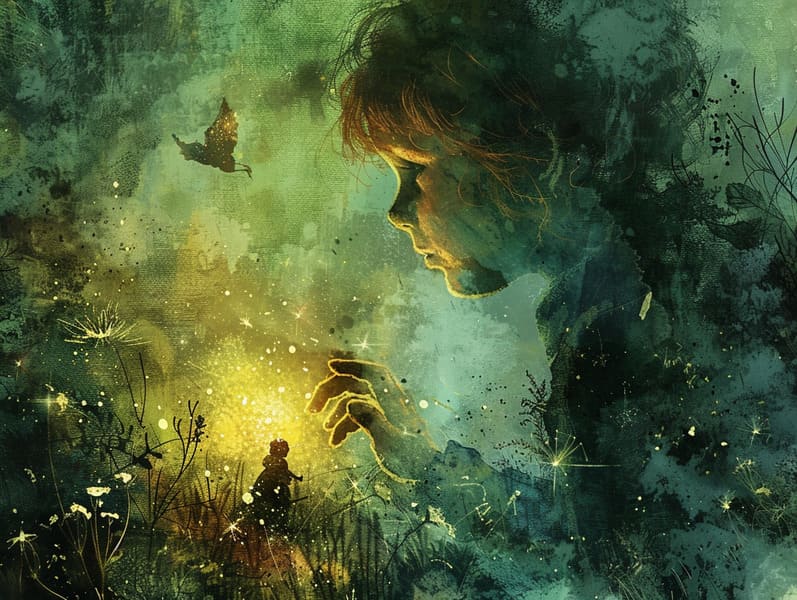The Creation of Popular Fairy Tales with the Immortal Fascination.
The Creation of Popular Fairy Tales with the Immortal Fascination.
Blog Article

Popular fairy tales have old origins. These narratives have been transmitted from one generation to the next far before they were ever published. They were born from a variety of cultures, including Eastern traditions. They were initially passed along among mature audiences, often carrying themes and messages relevant to the societal norms and beliefs of the time.
The Grimm brothers, the two Grimm brothers, were among the first to collect many of these beloved narratives. Their anthology, "Grimm's Fairy Stories," included tales like "Cinder Maid," "Hansel and Grethel," and "The True Story of Snow White," which have since become essentials in the world of timeless fairy tales. Similarly, H. C. Andersen's magical stories, such as "The Sea Maid," and "The Ugly Duckling," have gained the love worldwide, solidifying their place in the pantheon of classic fairy tales.
Despite being ancient, fairy tales remain as relevant as ever, especially as children's night stories. These delightful tales are now available in multiple formats, including artistically illustrated books, whimsical animations, and free fairy tales online.
Their lasting presence can be connected to several whimsical characteristics:
Valuable Lessons: Old fairy tales often impart important moral lessons. Fairy tales like "The Shepherd Boy and the Wolf" teach the value of truth, while "The Race of the Tortoise and the Hare" point out the benefits of steadfastness and unassuming nature. These narratives offer the young clear distinctions between correct and incorrect, molding their moral compass in a kind yet important way.
Compassion and Insight: Traditional fairy tales frequently include individuals facing trials and tribulations, inspiring kids to understand with their struggles and applaud their triumphs. For instance, "The Tale of Beauty and the Beast" conveys the importance of looking deeper to know the real character of a individual, encouraging sympathy and comprehension.
Cultural Understanding: Many traditional fairy tales are imbued with the cultural contexts from which they blossomed. Immersing in these stories can provide fascinating glimpses into different beliefs, cultivating a sense of international awareness and awareness.
Inventiveness and Imagination: The enchanted elements in traditional fairy tales—talking animals—foster children’s creative thoughts. These narratives guide readers to mythical realms, inspiring innovative thinking and a sense of marvel that remains a lifetime.
Old fairy tales are not only enchanting but also instructive. They function as magical tools in developing various cognitive and affective skills in children. When old fairy tales are spoken, they foster verbal development by offering new terms and sophisticated sentence structures. This practice also cultivates listening skills and mindfulness, as children keep up with the story, excited to see what happens next.
Furthermore, talking about the themes and characters of ancient fairy tales can advance evaluative skills and analytical skills. Children are educated to discern patterns, predict happenings, and comprehend cause and effect. These examinations also facilitate young readers voice their thoughts and feelings, enhancing their emotional intelligence.
In today’s cyber age, the prevalence of digital fairy tales has made these narratives more obtainable than ever. Internet sites and mobile apps offer extensive collections of bedtime fairy tales that can be read or listened on anytime, anywhere. Fairy tales told out loud are particularly prevalent, providing an enjoyable way for children to engage with these entrancing tales. Read-aloud books and read-out-loud videos lead characters and settings to life, often enhanced by spellbinding sound effects and musical scores that intensify the tale-telling adventure.
The timeless charm of timeless fairy tales lies in their ability to adapt to present days while preserving their central messages. Contemporary modernizations of these narratives often show more different characters and modern settings, making them website understandable to today’s audience. However, the central morals of daring, goodness, and equity remain unchanged, continuing to touch kids of all ages.
Ancient fairy tales also offer a sense of assurance and closeness. They give a well-structured narrative with a unmistakable beginning, middle, and end, often drawing to a close with the solving of conflicts and the triumph of honesty over deceit. This constancy can be encouraging for young ones, delivering a sense of reliability in an shifting world.
Old fairy tales continue to delight and inform new generations, maintaining their splendor and relevance in modern society. As children's bedtime stories, they bring a perfect blend of fascination and comprehension, developing moral values, empathy, and creativity. The prevalence of online storybooks and the well-received status of fairy tales recited make sure that these ancient tales remain available to new generations.
By protecting and disseminating these stories, we continue to admire the rich tapestry of cultural heritage and cultural heritage. Whether you are viewing a richly illustrated book, seeing a cyber library, or listening through an read-aloud book, the delight of old fairy tales is always within reach. These narratives highlight of the perpetual magic of tales and its ability to hold us together across generations and cultures.
Regardless if you are discovering a vividly illustrated book, enjoying a online collection, or playing an spoken story, the fascination of old fairy tales is always within reach.
These tales show us of the steadfast presence of tales and its ability to hold us together across time and space, forming a connection that fascinates and enlightens alike.